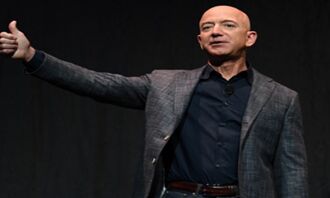55岁是当领导的黄金年龄
|
Aging isn’t only a downhill journey. While some of our mental faculties almost always decline over time, other cognitive abilities can stay the same, or even improve, scientists have discovered. The overall balance of these losses and gains means that for most people, the ideal time to tackle leadership roles is in their mid-50s, according to Darlene Howard, a psychologist emerita at Georgetown University. In healthy individuals, some parts of the brain shrink starting in our 20s. This shrinkage, which is not a loss of neurons but rather changes in size and connections among neurons, leads to differences in cognitive functions. In most cases, these changes are so gradual, it’s easy to adapt to them over time. On average, older adults tend to lose capabilities like mental speed, which can affect reaction times or the ability to connect different types of information, compared to younger individuals. Learning new material can become more difficult (but not impossible), and it may become harder to recall specific words or remained focused on a specific task in the presence of distractions.
The brain has some flexibility, though. In 2009, Denise Park, a psychologist at the University of Texas at Dallas, and Patricia Reuter-Lorenz at the University of Michigan gave this flexibility a name: STAC, or the Scaffolding Theory of Aging and Cognition. The theory states that as the brain perceives challenges to cognition, it can find new ways to work around them. An older person may use more regions of her brain to accomplish a task than a younger individual, but both people could do the job equally well. In some cases this adaptation may actually be beneficial. Older adults can have better vocabularies, because, although recalling words may be harder, they’ve had time to learn more of them, Howard said. They can also be better at solving interpersonal or abstract problems. Temporal discounting, or valuing the future just as much if not more than the present, tends to also get better with age, as does the ability to regulate emotions and cope with negative feelings, Howard explained at a forum at the National Press Foundation earlier this month. So at what point are the cognitive gains associated with aging at their maximum, while losses are at a minimum? Probably mid-50s, Howard said, when asked about the ideal age for a US president. However, there’s so much variability in the way that individual’s brains may change over time, it’s not a perfect predictor of ideal leadership skills. Still, seven of the CEOs in the top 10 of Fortune’s list of the 10 biggest companies from 2018 fall between the ages of 50 to 60 years old. Of course, cognitive abilities alone do not determine leadership capabilities. If an older leader with ample experience effectively surrounded herself with younger, knowledgable staff, it could be possible for her to be just as effective than younger individuals. Notably, the mid-50s aren’t necessarily the peak of other aspects of life. Previous work has shown that at this age in the US, people tend to report they are the least happy, and depression rates are highest. People appear to be the happiest and least depressed after the age of 70, when they have likely exited the workforce. |









